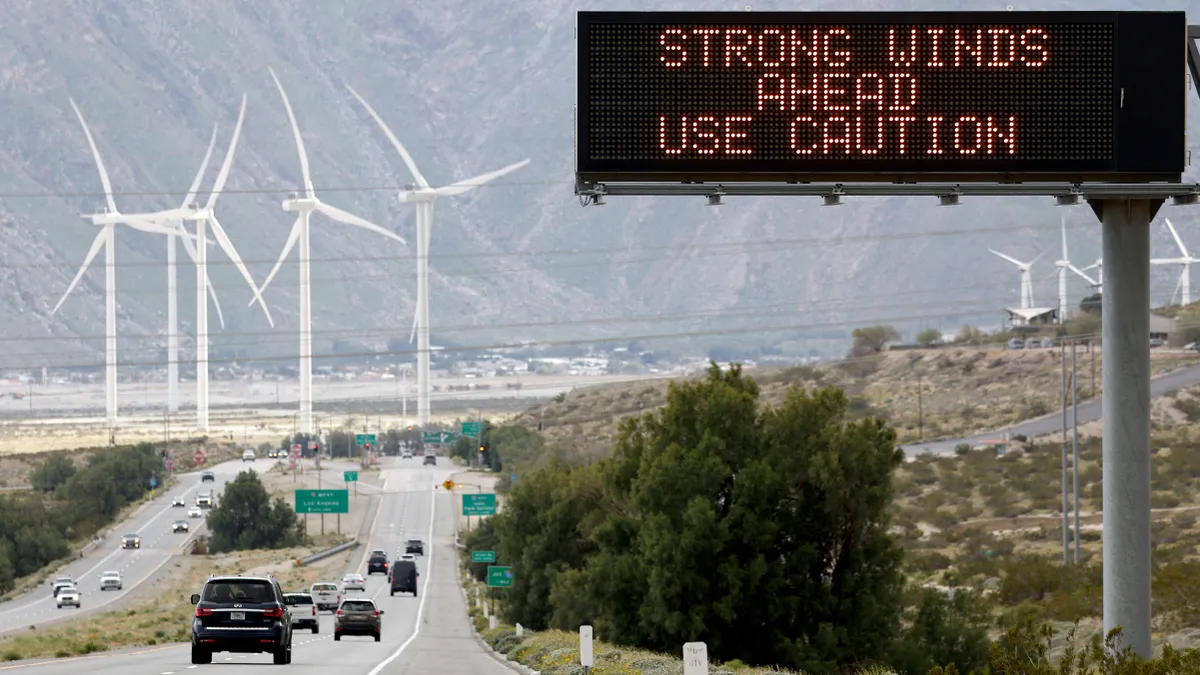This is the latest installment in Utility Dive’s “Taking Charge” series, where we engage with power sector leaders on the energy transition.
More than 16,200 residential solar-plus-storage systems will participate in Sunrun’s CalReady virtual power plant this summer, ready at a moment’s notice to supply power to the grid when demand peaks on hot evenings.
Participation in the virtual power plant, operated under the California Energy Commission’s Demand Side Grid Support Program, is nearly double the showing for Sunrun’s first-of-its-kind VPP pilot with PG&E last year. That collaboration resulted in “a real power plant” that peaked at 32 MW and averaged 27 MW over a two-hour peak every day for 90 days straight, Sunrun Head of Grid Services and VPPs Chris Rauscher told Utility Dive.
PG&E does not plan to collaborate with Sunrun on VPPs this year, but the companies are “exploring possibilities for future programs … PG&E sees VPPs as an essential part of California’s clean energy future and is actively looking to integrate more VPP resources into our portfolio and improve their performance as a reliable resource,” PG&E spokesperson Paul Doherty said. The utility expects to have approximately 412 MW of VPP resources this year, he added.
Like PG&E, Sunrun’s Rauscher believes VPPs are ready for prime time despite lingering misconceptions stemming in part from the distributed energy industry’s own marketing missteps.
“We’ve shown that VPPs provide real value to the grid, utilities and customers, but historically [VPPs] have been victims of their own branding,” he said. Rather than “virtual,” Rauscher prefers “distributed” power plants.
Best practices for simpler, more customer-friendly VPPs
With abundant sunshine, high electricity rates, eco-conscious residents and aggressive decarbonization goals, California is ground zero for VPP adoption. The state hosted 24% of all North American VPP projects, Wood Mackenzie said in a report released March 29, 2023.
But a Brattle Group report released earlier this year put California 34th out of 50 states in a broader measure of utility-led demand-response capacity, behind smaller states with more robust DR incentives for large agricultural, commercial and industrial users. Rauscher believes residential VPPs can help.
Sunrun, which sells home solar, storage, EV charging and energy management systems, has nearly 1 million customers in the U.S. But the company needs help from utilities and state regulators to harness those resources into VPPs, Rauscher said.
“VPP programs can be overly complicated, and they don’t have to be,” he said.
Well-designed VPP programs typically cover entire states or utility territories, are “open-access or bring-your-own-device” rather than limited to a particular battery type, meter at the battery level and require no special utility software, Rauscher said. As an aggregator, he added, Sunrun has its own VPP management software and can bring “an entire fleet” of Sunrun subscribers to scale bring-your-own-device programs faster.
Straightforward financial incentive programs like CalReady or New England’s ConnectedSolutions can encourage customer participation in VPP programs, Rauscher said.
State policy can set the stage for VPP growth as well. California’s solar attachment rate jumped from approximately 10% to 60% after the state enacted its storage-friendly NEM 3.0 net energy metering tariff in April 2023, according to a Lawrence Berkeley National Laboratory technical brief.
Third-party ownership of solar-and-storage systems in California also surged from 11% to 52% during the same period, in part because larger home energy companies like Sunrun — which leases the majority of its systems — accounted for a higher share of installations, the brief said.
“Our primary customer type is not really an early adopter,” but rather a “busy family” looking to save money and access backup power, Rauscher said. Though financially beneficial in markets with performance-based incentives for home energy systems, VPP participation is often a secondary benefit for Sunrun’s customers, he said.
In Rauscher’s view, targeting early adopters is not the most efficient way to drive VPP participation at scale. He worries this approach could reinforce perceptions of VPPs as complex and inconvenient. It’s better, he said, to reassure customers that participation won’t cause any discomfort and won’t fully drain their batteries while ensuring “[they] don’t have to do anything” to enjoy its benefits.
Showing utilities the value of VPPs
Utilities, grid operators and policymakers are paying more attention to VPPs’ potential as the solar industry matures, driving changes in how and when power is produced and consumed, Rauscher said. High solar penetration on the CAISO grid, for example, means “PG&E has a new peak after sundown,” he noted.
Projected load growth is also sharpening the resource-adequacy case for VPPs, which can be assembled faster than a traditional power plant can be built — or time-of-use tariffs updated — and dispatched in seconds. The Sunrun-PG&E pilot took just six months to roll out, faster than “you [can] turn on any peaking resource in the 30-MW range,” Rauscher said.
Meanwhile, Sunrun’s PowerOn Puerto Rico VPP, the largest participant in the island territory’s Battery Emergency Demand Response Program, supports reliability on a grid that experiences frequent generator outages. When supply falters, Sunrun “pushes max power” from the VPP’s more than 2,000 batteries, giving local utility LUMA time to triage the grid without resorting to rolling blackouts, Rauscher said.
That has happened “a dozen times since last fall,” Sunrun CEO Mary Powell said in a May 1 press release.
PowerOn Puerto Rico’s success shows that “any utility today can have a VPP program,” even one beset by grid reliability issues, Rauscher said. “[Every U.S.] utility is on a spectrum between PG&E and LUMA.”
Along with new research suggesting broader VPP adoption can defer the need for costly infrastructure upgrades — such as a May 2023 Brattle Group report that found 60 GW of VPP deployment could avoid $15 billion to $35 billion in otherwise-needed capacity investments in the next decade — these real-world “proof points” demonstrate VPPs’ value to utilities and grid operators, Rauscher said.
Rauscher believes utilities, like their customers, ultimately favor simplicity and clarity when considering new systems and technologies. Fortunately, VPPs’ strongest present-day value proposition — flattening demand peaks — is easy to understand and easy for VPP aggregators like Sunrun to customize for different grids or consumption patterns, he said.
“It’s very easy for us to program batteries to charge during the duck curve,” and then discharge in staged cohorts “to knock down peaks sequentially,” Rauscher said.
The “more sophisticated stuff,” such as locational value, frequency regulation and other grid services enabled by VPP programs like Utah’s Wattsmart, “should come after” peak-shaving and emergency response, he added.
But Rauscher acknowledges that in a world where VPPs have truly gone mainstream, Sunrun won’t be the only successful model.
“There should be room for all different approaches and designs,” he said.





















